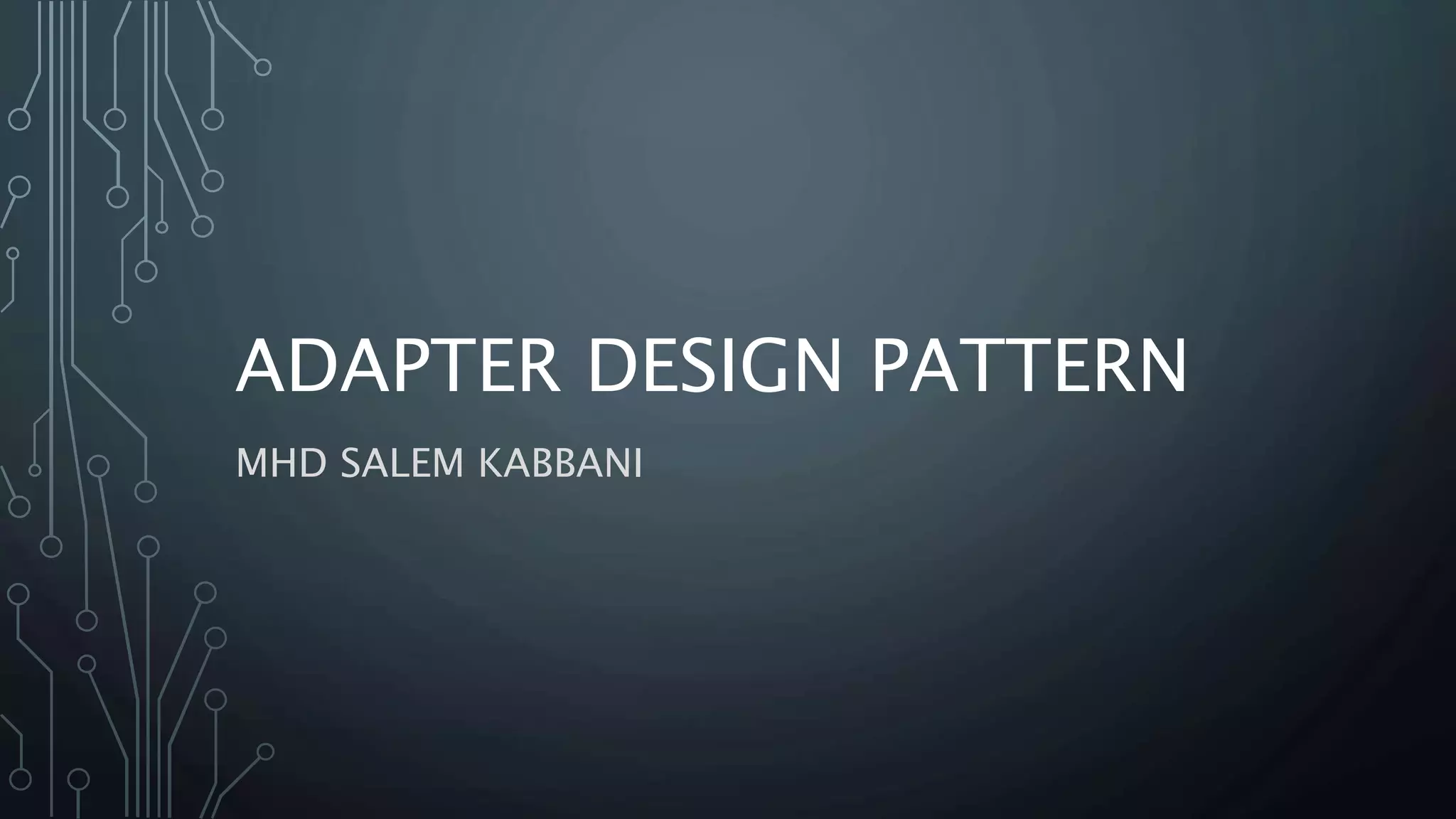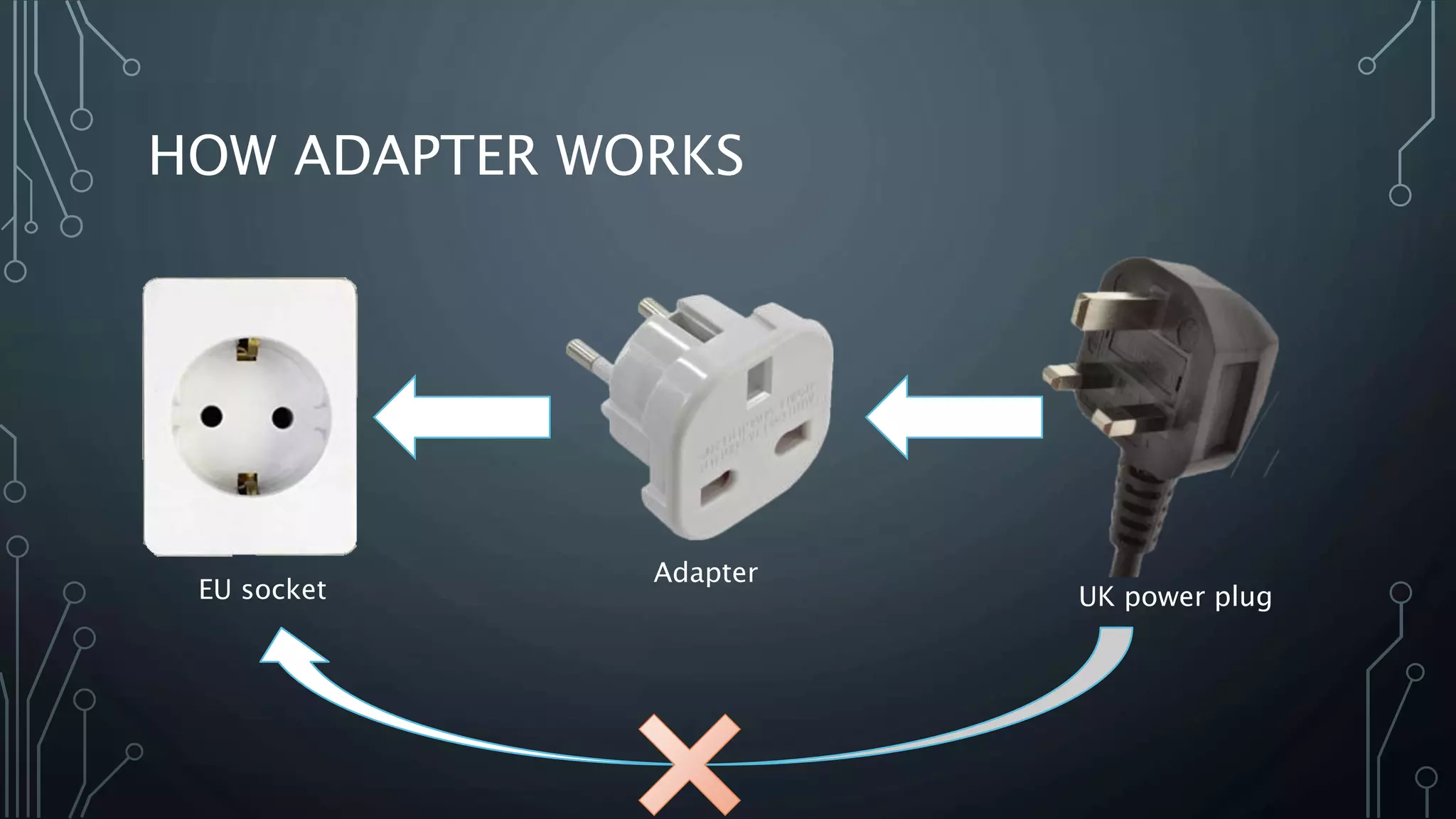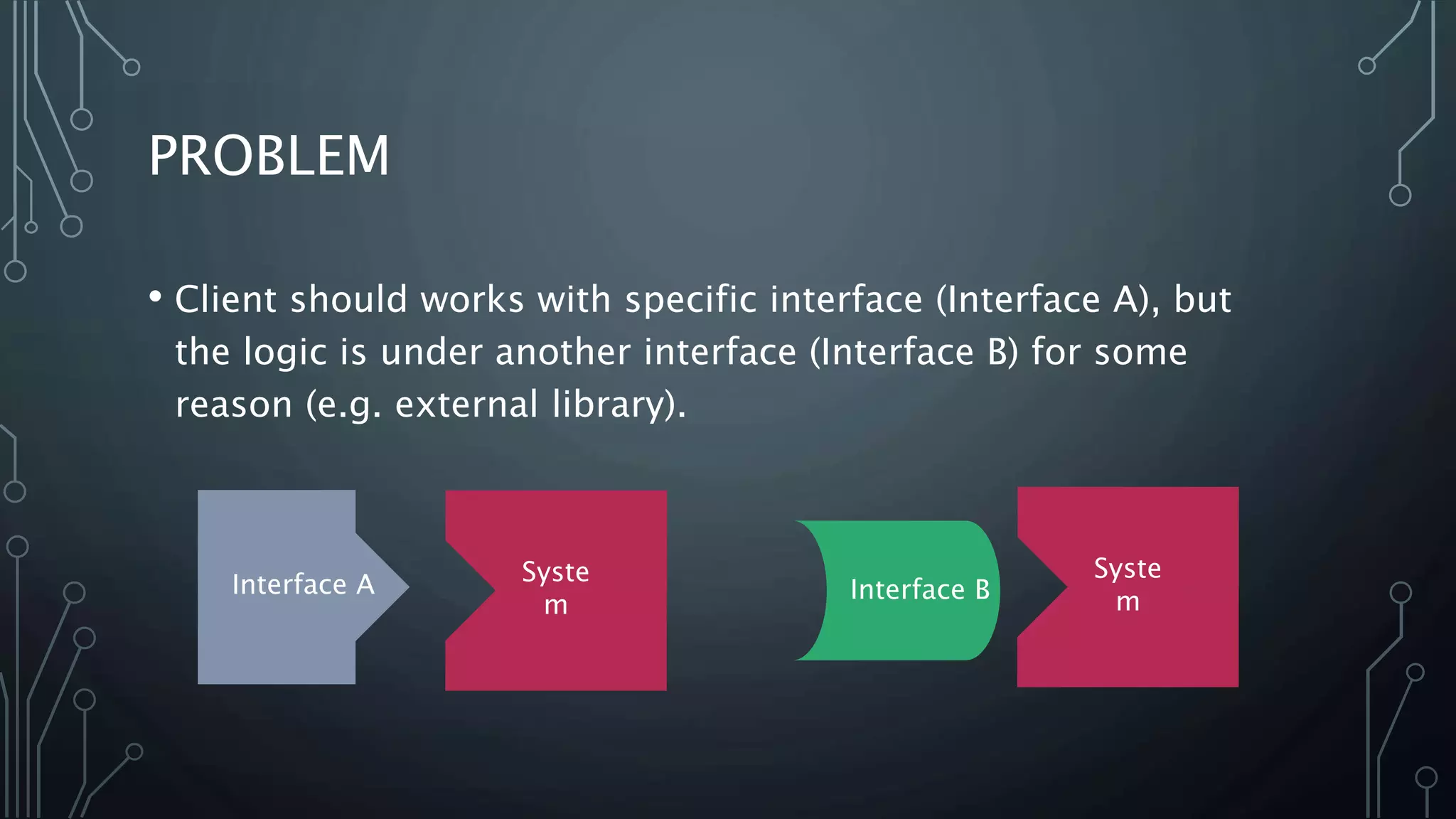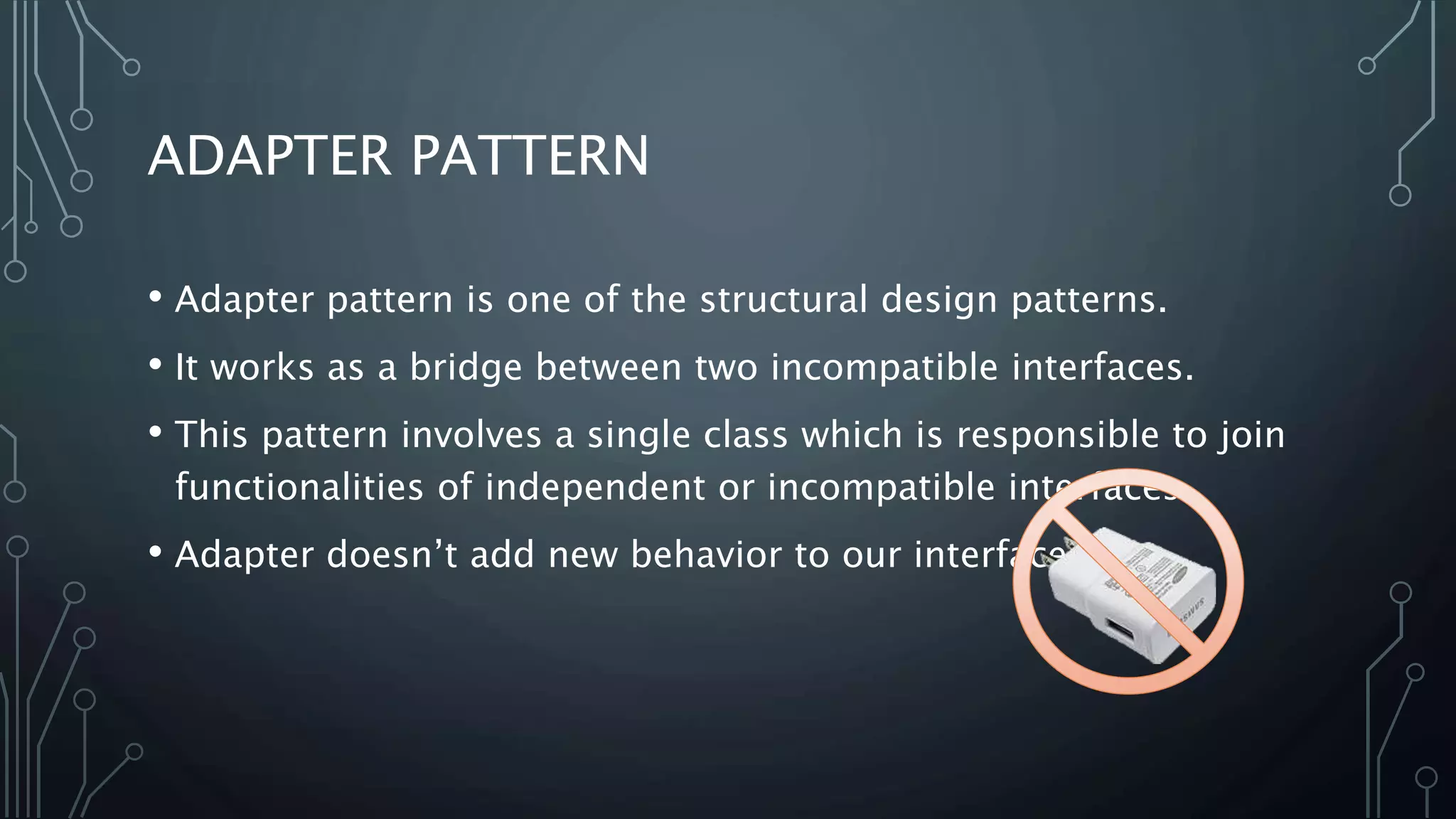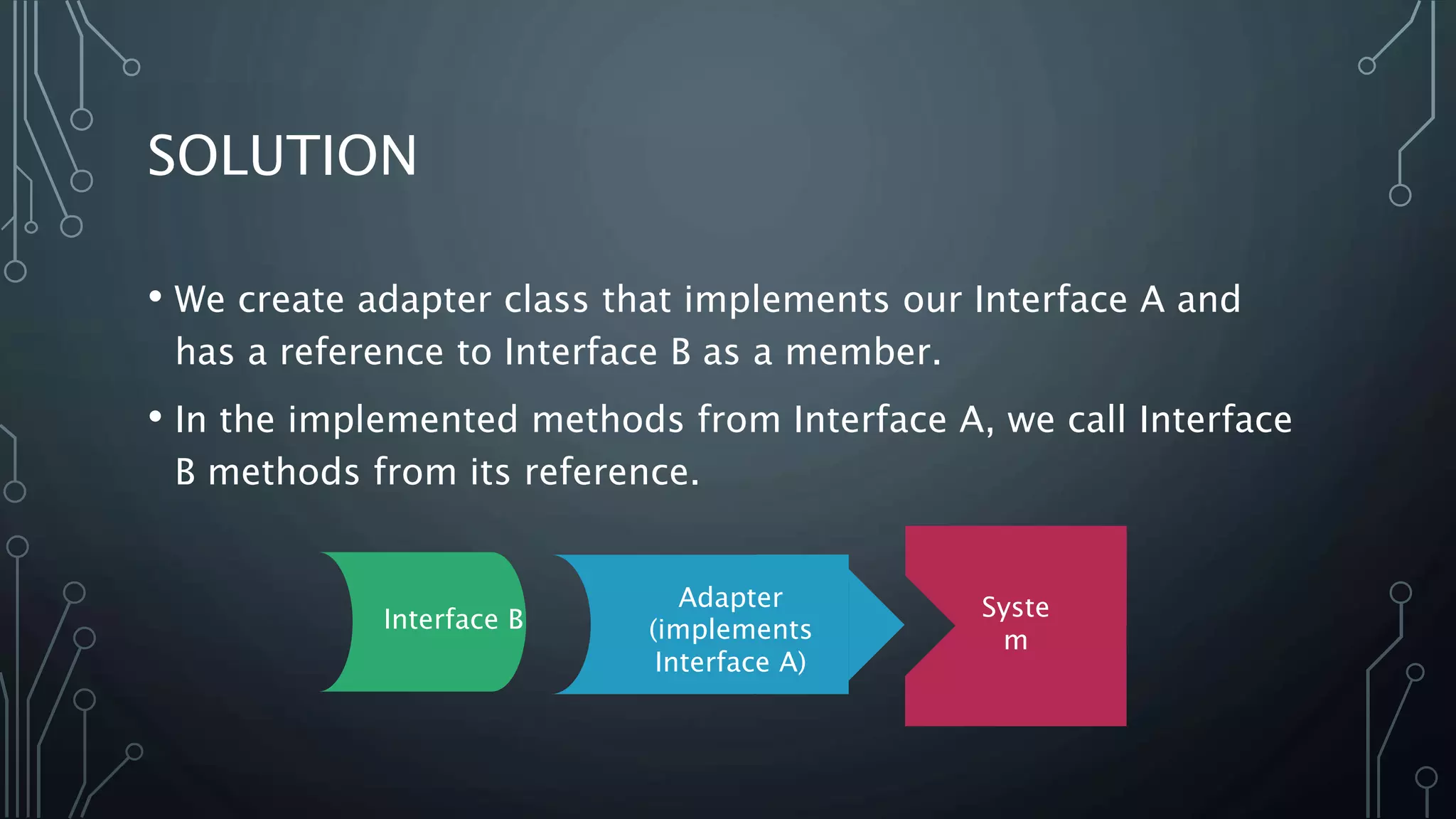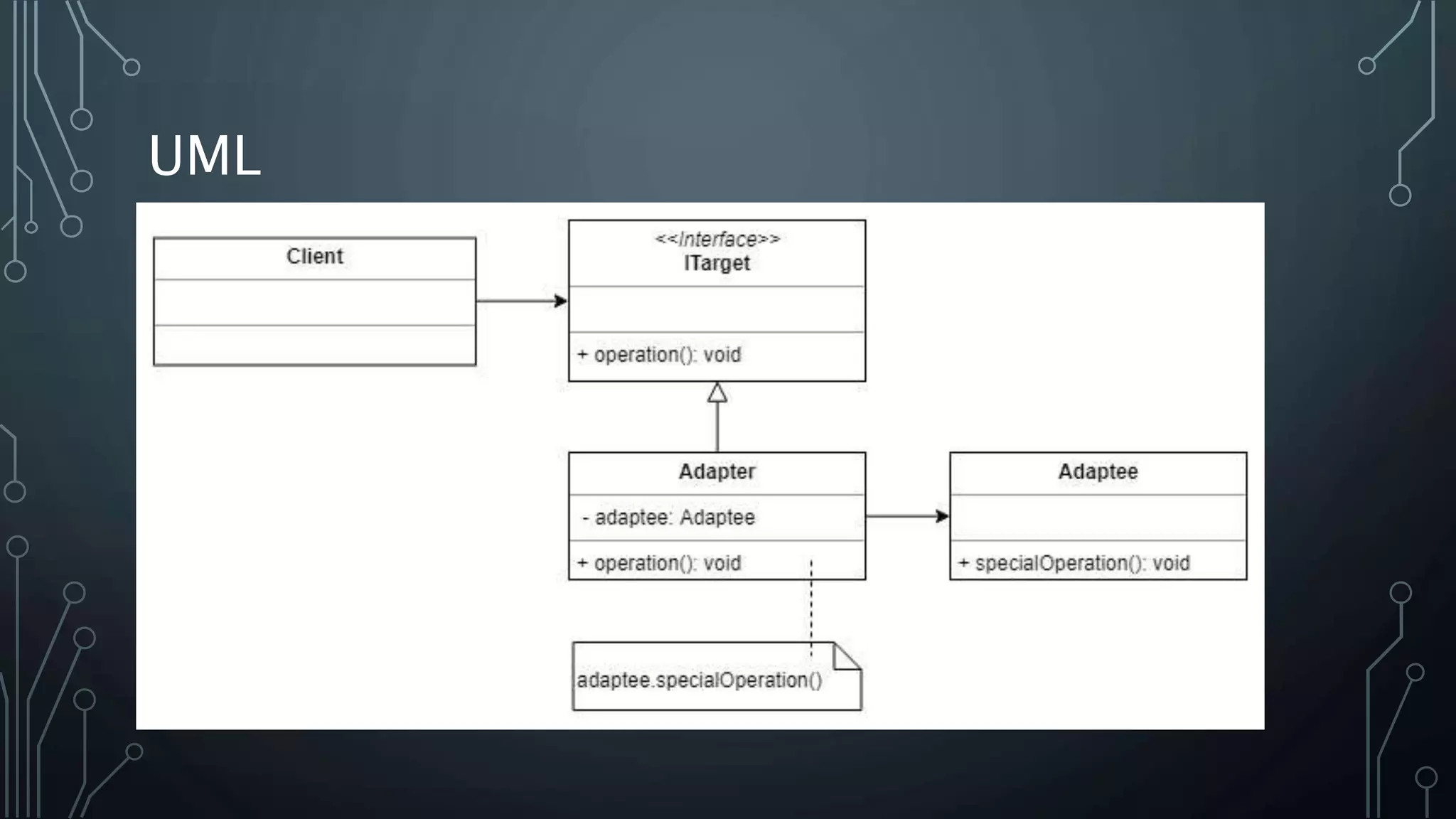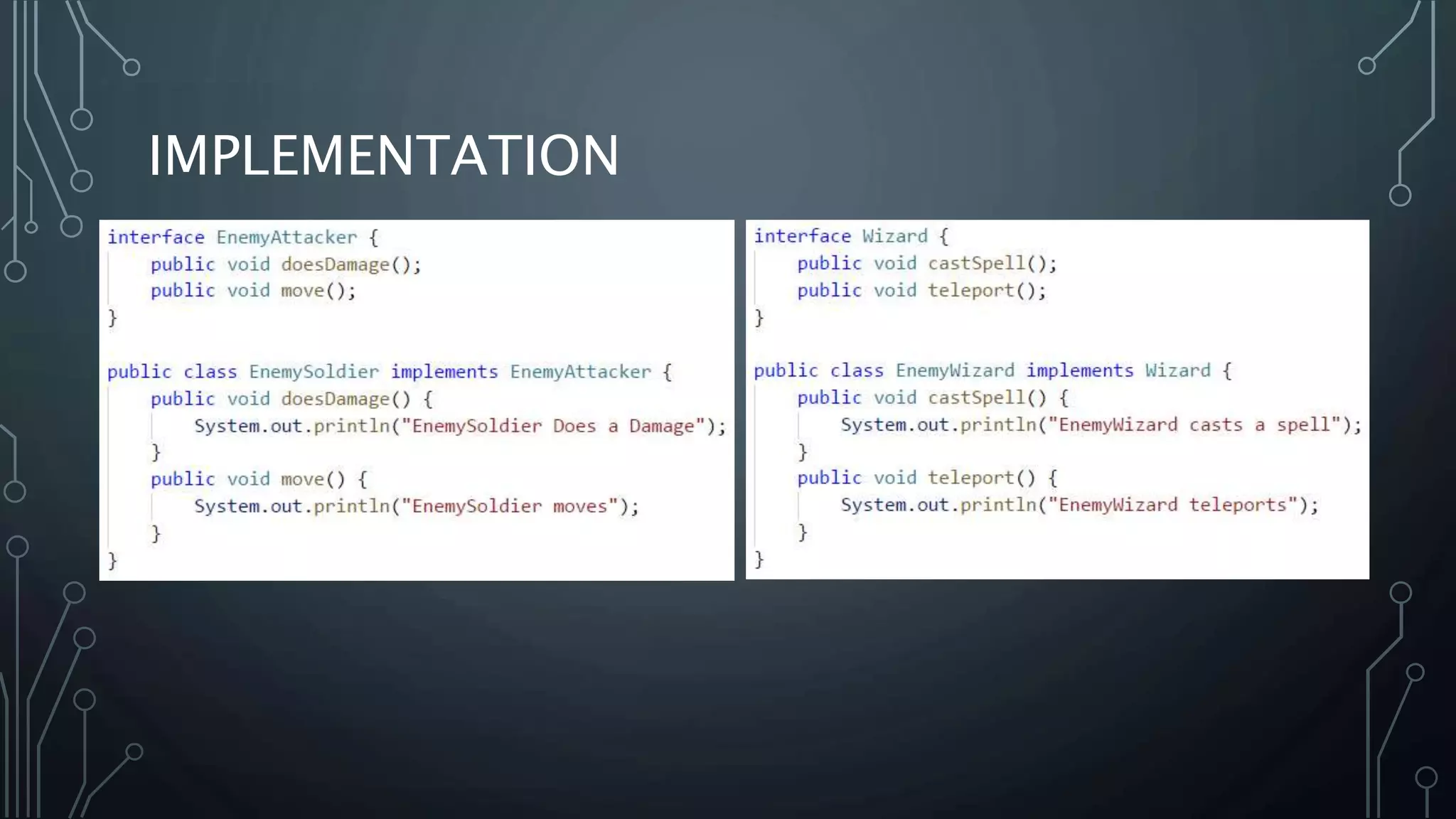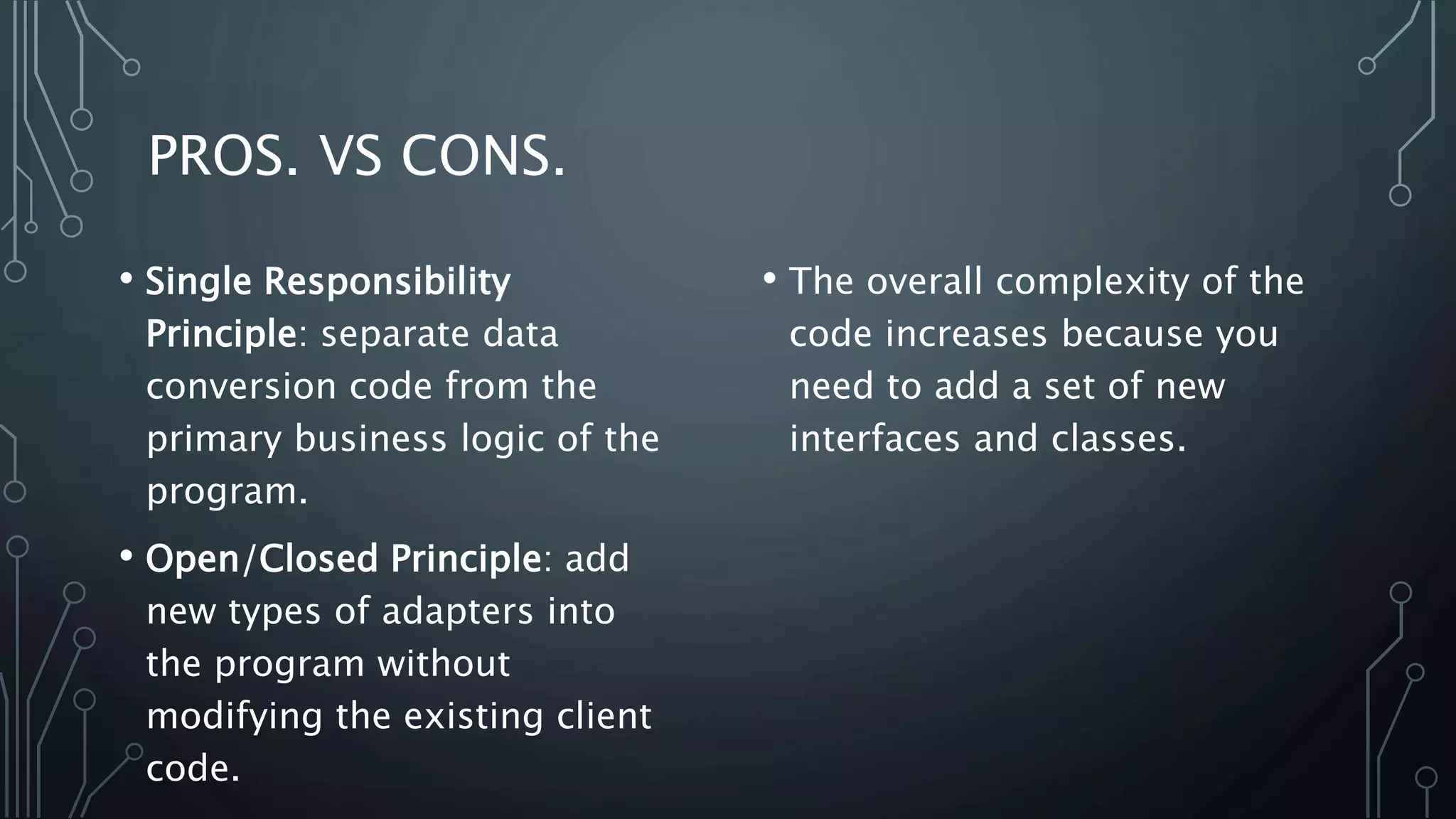The adapter design pattern serves as a bridge between two incompatible interfaces, allowing a client to interact with a specific interface while utilizing logic from another. It involves creating an adapter class that implements one interface and references another, facilitating method calls between the two. While it provides flexibility and adheres to principles like single responsibility and open/closed, it can also increase code complexity due to the need for additional interfaces and classes.
